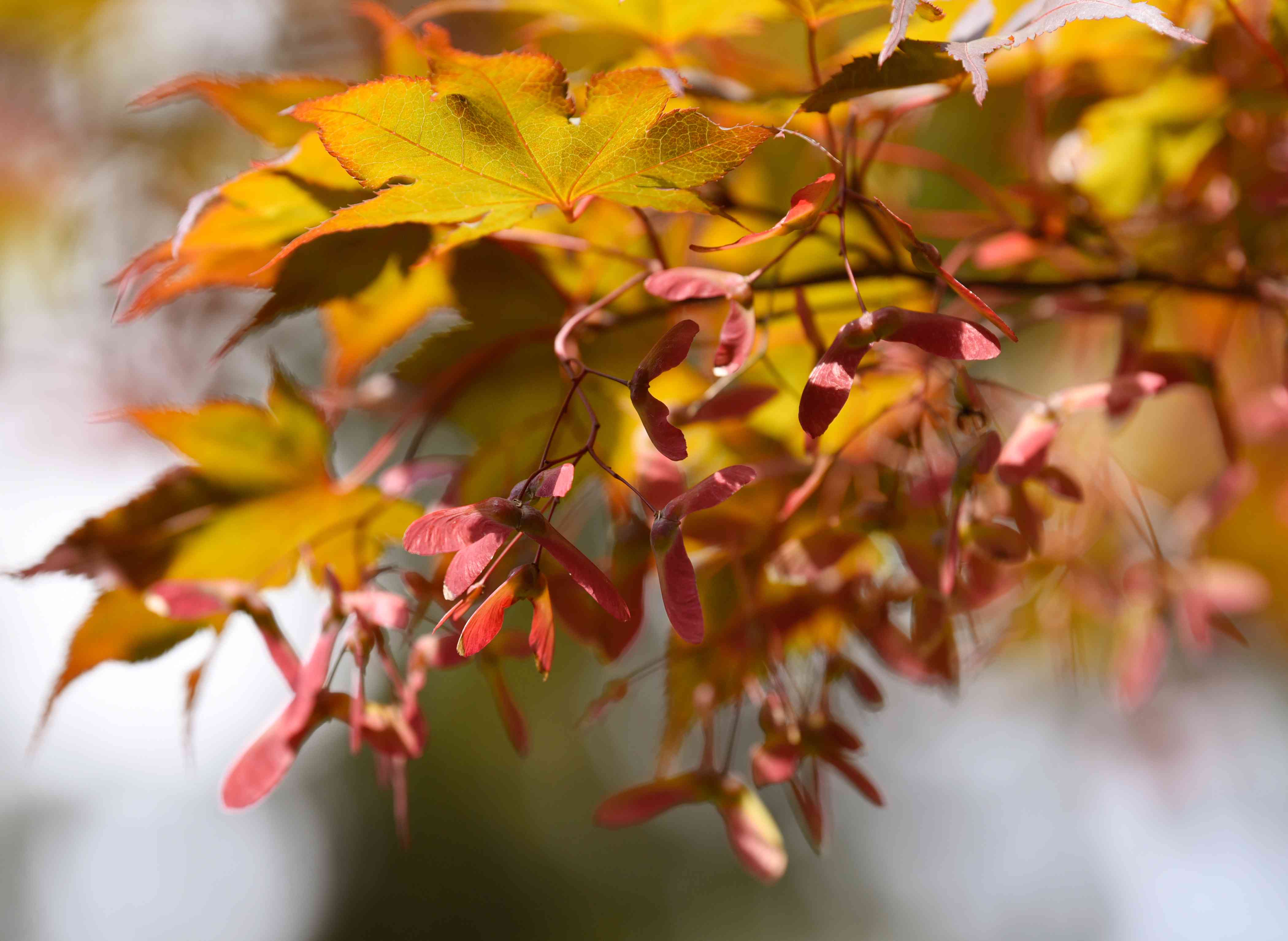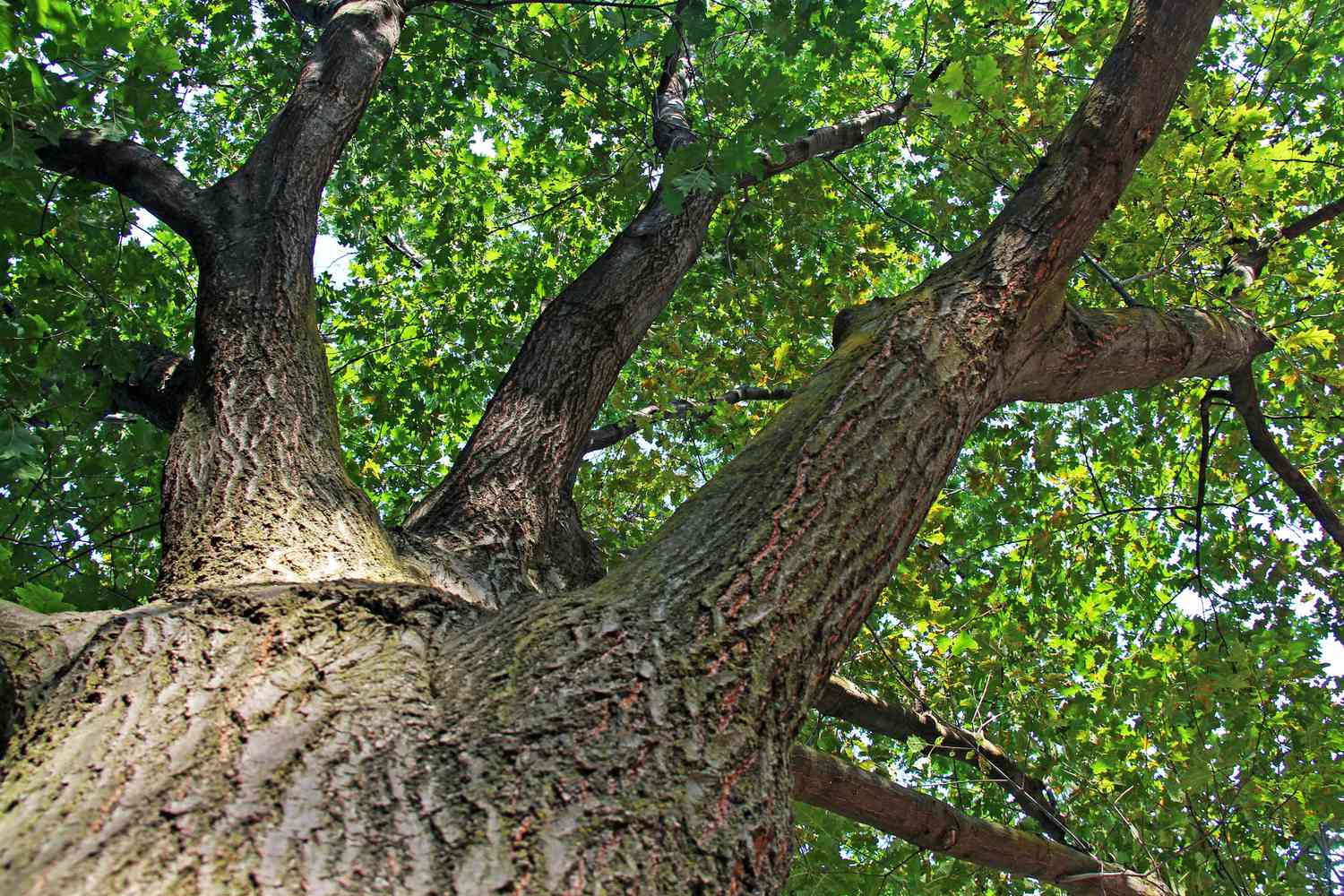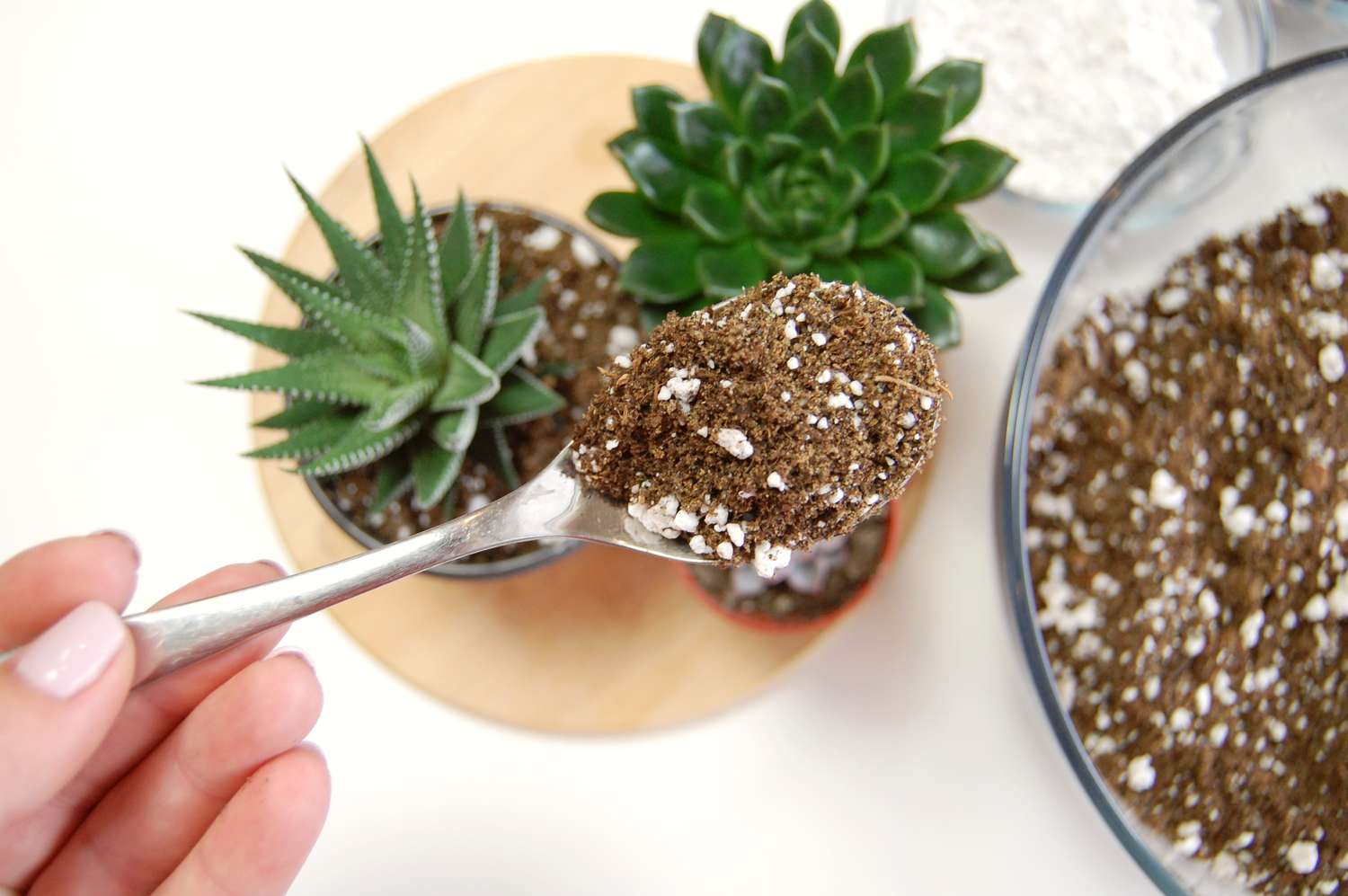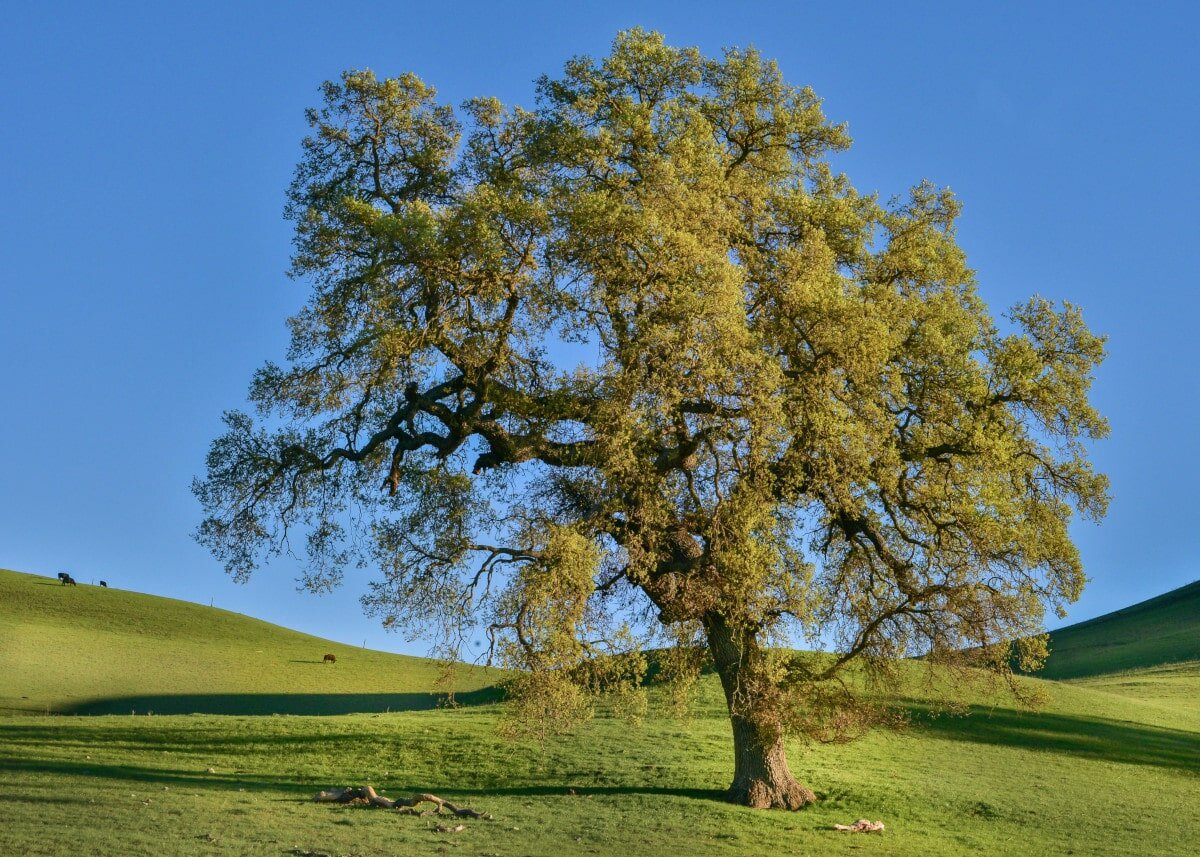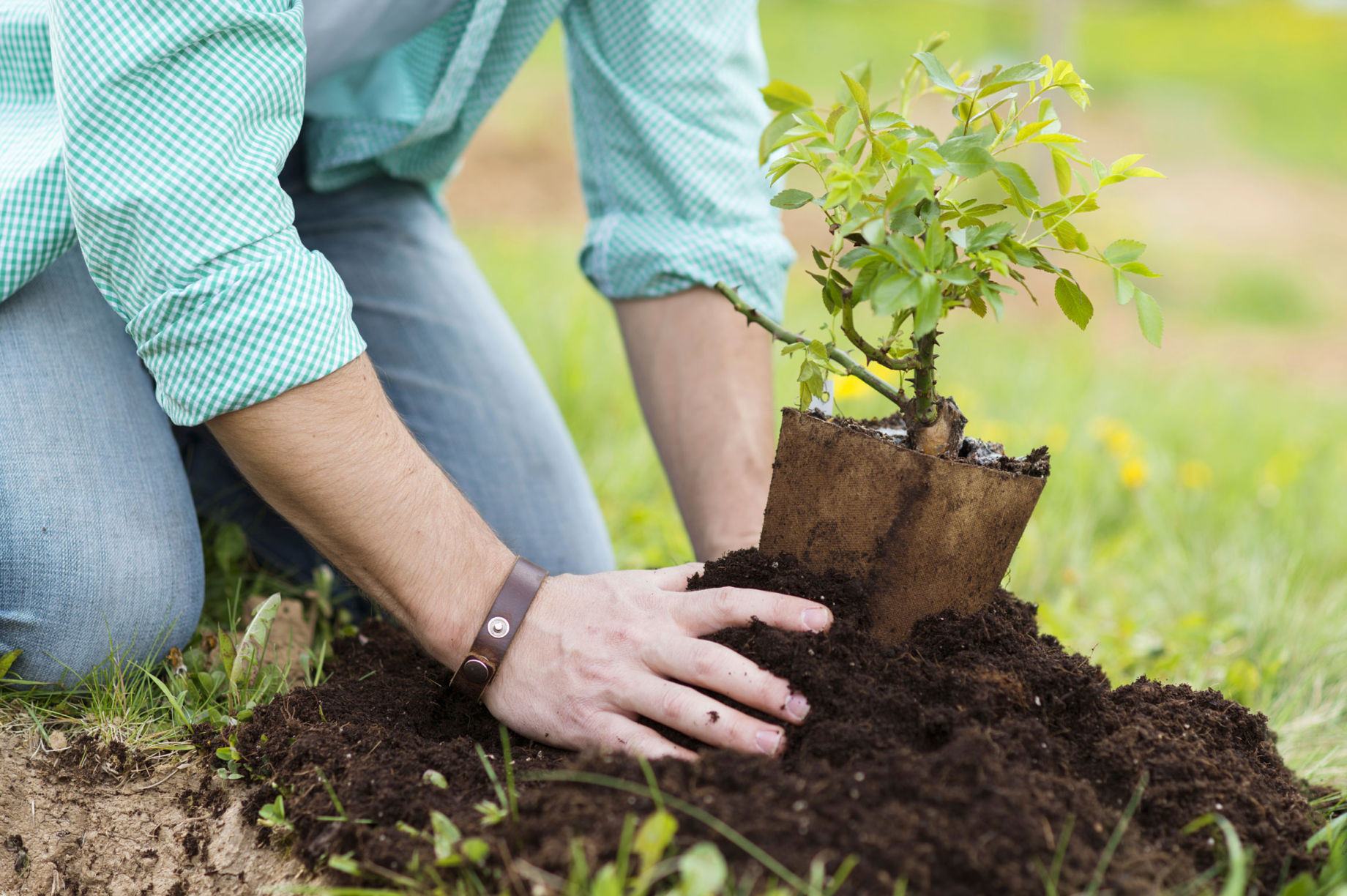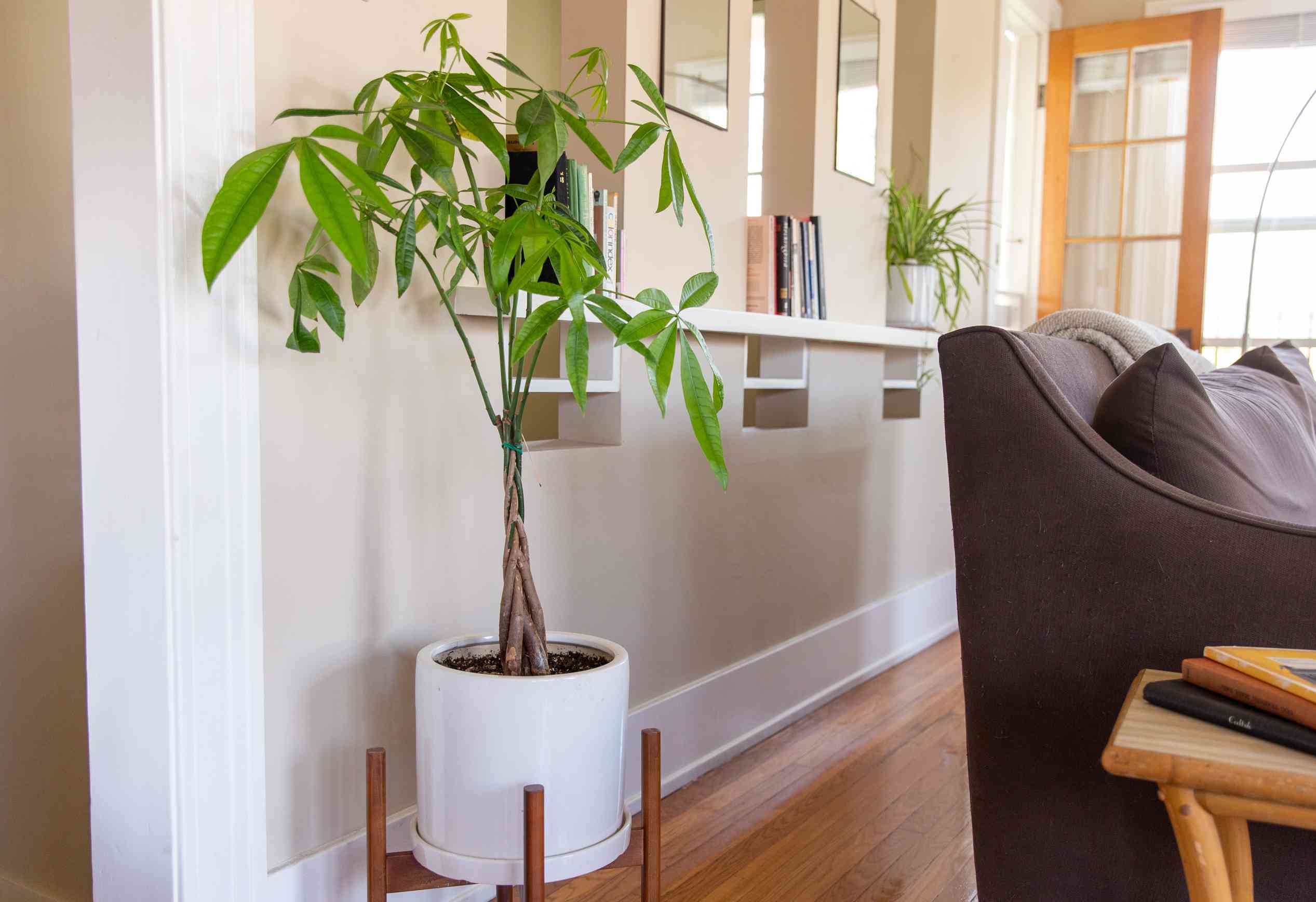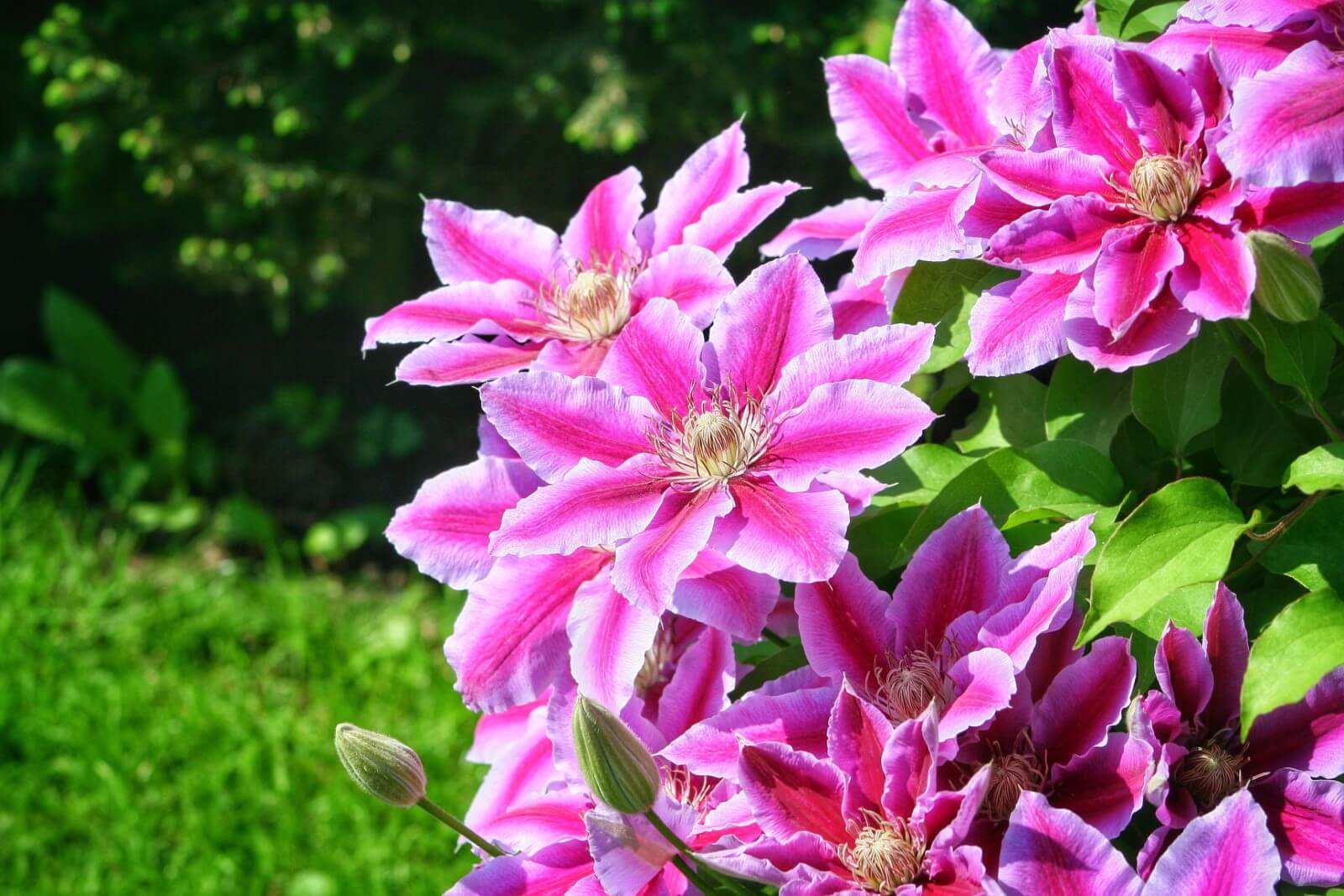Home>Gardening Basics>Understanding Soil>What Kind Of Soil For Money Tree


Understanding Soil
What Kind Of Soil For Money Tree
Published: February 11, 2024
Discover the importance of understanding soil for money trees. Learn what kind of soil is best for these popular houseplants to ensure healthy growth and thriving foliage.
(Many of the links in this article redirect to a specific reviewed product. Your purchase of these products through affiliate links helps to generate commission for Chicagolandgardening.com, at no extra cost. Learn more)
Table of Contents
Introduction
Gardening and indoor plants have become increasingly popular, with many individuals seeking to bring the beauty of nature into their homes. One plant that has captured the attention of plant enthusiasts and beginners alike is the money tree, scientifically known as Pachira aquatica. Its unique braided trunk and vibrant green leaves make it a visually appealing addition to any space.
However, for the money tree to thrive and flourish, it requires more than just a stylish pot and regular watering. One crucial factor that contributes to its overall health and well-being is the type of soil it is planted in. The right soil composition provides the essential nutrients, proper drainage, and pH balance necessary for the money tree’s optimal growth.
Understanding the importance of soil for the money tree is vital for every plant owner. By selecting and maintaining the appropriate soil, you can ensure that your money tree remains vibrant, lush, and healthy for years to come. In this article, we will delve into the characteristics of ideal soil for the money tree, explore different soil types, discuss soil composition and mixtures, and offer tips for maintaining the soil to support your money tree’s growth.
So, if you’re ready to dive into the world of soil and discover what type of environment your money tree needs to thrive, let’s get started!
Importance of Soil for Money Tree
The soil plays a crucial role in the overall health and growth of a money tree. It serves as a foundation for the plant, providing essential nutrients, proper drainage, and a medium for the roots to anchor themselves. Understanding the importance of soil composition is key to creating an optimal environment for your money tree.
One of the primary benefits of having the right soil for your money tree is the availability of nutrients. Good soil contains a balanced mix of organic matter, minerals, and microorganisms that provide the necessary elements for healthy plant growth. These nutrients are vital for the money tree’s overall well-being, as they support the development of leaves, stems, and roots.
Proper drainage is another critical factor when it comes to selecting the right soil for your money tree. Excessive water retention can lead to root rot and other fungal diseases that can damage or even kill the plant. On the other hand, poor drainage can cause water to accumulate around the roots, depriving them of oxygen and leading to root suffocation. The ideal soil for a money tree should strike a balance, allowing for adequate water retention while still providing sufficient drainage.
Furthermore, the pH level of the soil is essential for the money tree’s well-being. The pH scale measures the acidity or alkalinity of the soil. Money trees typically prefer a slightly acidic to neutral pH range, around 6.0 to 7.0. Soil outside of this range can hinder nutrient absorption and impact the plant’s ability to thrive. Therefore, it is crucial to select soil that aligns with the money tree’s preferred pH level.
Choosing the right soil for your money tree is not only important for its immediate health but also for its long-term growth and sustainability. Healthy soil promotes strong root development, which directly contributes to the plant’s ability to uptake nutrients and water. Establishing a solid foundation through proper soil composition can lead to a resilient and thriving money tree that will continue to beautify your space for years to come.
Characteristics of Ideal Soil for Money Tree
When it comes to creating the ideal soil for your money tree, several key characteristics should be considered. Each of these characteristics plays a crucial role in providing the optimal growing conditions for your plant.
First and foremost, the soil for a money tree should have good drainage. Poorly drained soil can lead to root rot and other moisture-related issues that can harm the plant. To ensure adequate drainage, the soil should be loose and well-aerated. Adding organic matter such as perlite or sand can improve the soil’s drainage capacity.
Moreover, the soil should have a good water-holding capacity to ensure that the plant has access to moisture when needed. However, it should not retain water for prolonged periods. A balance between good drainage and water retention is essential. Sandy loam or loamy soil is often recommended for money trees due to its ideal moisture-holding capabilities.
The soil should also be rich in organic matter. Organic matter helps to improve the soil’s fertility and enhances its ability to retain nutrients. Compost or well-rotted organic material can be added to the soil to ensure a rich organic content.
The pH level of the soil is another important characteristic to consider. Money trees prefer slightly acidic to neutral soil, with a pH range of 6.0 to 7.0. Testing the soil’s pH and making necessary adjustments using additives or amendments can help create the ideal pH level for your money tree.
In addition to these characteristics, the soil should be well-nourished. It should contain the necessary nutrients that the money tree requires for healthy growth. A balanced fertilizer specifically formulated for indoor plants can be added to the soil periodically to replenish essential nutrients.
Lastly, the soil should be free from contaminants and toxins. Using organic or chemical-free soil ensures that your money tree is not exposed to harmful substances that can affect its health and growth.
By considering these essential characteristics, you can create the ideal soil conditions for your money tree, providing a nurturing environment that promotes robust growth and overall plant health.
Best Soil Types for Money Tree
The money tree, like any other plant, thrives best when planted in soil that caters to its specific needs. While there are numerous soil types available, certain ones are particularly well-suited for promoting the growth and vitality of a money tree.
1. Loamy Soil: Loamy soil is often considered the best soil type for money trees. It is a combination of sand, silt, and clay, which ensures a well-balanced soil structure. Loamy soil offers excellent drainage while retaining adequate moisture, promoting healthy root development and preventing waterlogged conditions. This type of soil is also rich in nutrients and organic matter, which benefits the overall growth of the money tree.
2. Sandy Soil: Sandy soil is another suitable option for money trees. It has large particles that allow for good drainage and aeration, preventing water from pooling around the roots. However, sandy soil has a lower water-holding capacity and nutrient retention, so it is crucial to ensure regular watering and supplement the soil with organic matter and fertilizers to maintain the necessary moisture and nutrient levels.
3. Cactus Soil Mix: A cactus soil mix, which consists of a combination of gritty materials and organic matter, is an excellent choice for money trees. This type of soil provides quick drainage, preventing overwatering and root rot. Additionally, the gritty texture allows air to circulate around the roots, promoting healthy growth. The organic matter in the mix helps retain moisture and provides essential nutrients for the money tree.
4. Potting Mix: A high-quality potting mix specifically formulated for indoor plants, such as a mixture of peat moss, perlite, and vermiculite, is another option for growing money trees. This type of soil has good moisture retention and drainage properties, ensuring the right balance of water for the plant. Potting mix also contains an optimal blend of nutrients that supports healthy growth and development.
When selecting the best soil type for your money tree, it is important to consider the specific needs and preferences of the plant, such as its optimal drainage and nutrient requirements. By choosing the right soil, you provide a solid foundation for your money tree’s growth and ensure that it receives the necessary conditions for thriving.
Soil Composition and Mixtures for Money Tree
The composition of the soil surrounding a money tree plays a vital role in its overall health and growth. By understanding the ideal soil composition and exploring different mixtures, you can create the perfect environment for your money tree to thrive.
A balanced soil composition typically consists of three main components: organic matter, inorganic matter, and microorganisms. Organic matter, such as compost, is rich in nutrients and helps improve the soil’s fertility. It enhances moisture retention and provides a steady release of essential nutrients for the money tree. Inorganic matter, including sand, silt, and clay, affects the texture and structure of the soil. It contributes to the soil’s water-holding capacity, drainage, and aeration. Lastly, microorganisms, such as beneficial bacteria and fungi, contribute to the breakdown of organic matter and aid in nutrient cycling, promoting a healthy soil ecosystem.
Creating a suitable soil mixture for a money tree involves combining these components in the right proportions. One popular mixture includes equal parts potting soil, organic compost, and vermiculite or perlite. This blend provides a well-balanced medium that retains moisture, allows for proper drainage and aeration, and supplies essential nutrients to the money tree. You can also add a small amount of sand to improve drainage if needed.
Another soil mixture that works well for money trees is a combination of soilless media, such as peat moss or coco coir, perlite, and compost. This mix provides excellent moisture retention, prevents soil compaction, and promotes a healthy root system. It also offers good drainage and aeration, ensuring that the money tree’s roots receive sufficient oxygen.
Additionally, incorporating organic fertilizer into the soil mixture can further enhance the nutrient content. Slow-release granular fertilizers specifically formulated for indoor plants are ideal for money trees. These fertilizers provide a gradual release of nutrients over time, supplying the plant with a continuous source of nourishment.
It is worth noting that while soil composition and mixtures are essential, they may vary depending on individual preferences and local conditions. It is recommended to monitor the moisture levels and observe the plant’s response to determine if any adjustments to the soil composition need to be made.
By understanding the importance of soil composition and experimenting with different mixtures, you can create a customized environment that meets the specific needs of your money tree, fostering its growth and ensuring its long-term health.
pH Level and Drainage for Money Tree Soil
The pH level and drainage of the soil play crucial roles in maintaining the health and well-being of a money tree. Understanding the importance of these factors will help you provide the optimal growing conditions for your plant.
The pH level refers to the acidity or alkalinity of the soil. Money trees generally prefer slightly acidic to neutral soil, with a pH range of 6.0 to 7.0. pH levels outside of this range can affect nutrient availability and hinder the plant’s ability to absorb essential elements. Testing the pH of the soil with a home testing kit or through laboratory analysis can help you determine if any adjustments are necessary. If the soil pH is too acidic, you can add limestone or powdered eggshells to raise the pH. On the other hand, if it is too alkaline, sulfur or pine needles can be added to lower the pH. Maintaining the proper pH level ensures that your money tree can efficiently uptake nutrients and thrive.
Proper drainage is equally important for the health of a money tree. Well-draining soil allows excess water to flow away from the roots, preventing waterlogging and root rot. Money trees are susceptible to root rot, and stagnant water around the roots can lead to the demise of the plant. To improve drainage, you can incorporate materials such as perlite, sand, or vermiculite into the soil mixture. These amendments help create air pockets and loosen the soil, promoting better drainage and aeration. Ensuring that the pot or container has drainage holes is also crucial to prevent water accumulation at the bottom.
Monitoring soil moisture is essential for proper drainage. Overwatering can lead to waterlogged conditions, while underwatering can result in dry and stressed roots. It is best to allow the top inch or two of soil to dry out slightly between waterings. The frequency of watering will depend on various factors, such as temperature, humidity, and the size of the pot. Regularly checking the moisture level by sticking your finger into the soil can help determine when it’s time to water.
Furthermore, checking the drainage of the soil is crucial during repotting. Ensuring that the new pot has adequate drainage holes and using well-draining soil mixture will help maintain a healthy balance of moisture for the money tree.
By maintaining the appropriate pH level and promoting good drainage, you can create an optimal soil environment for your money tree. This facilitates nutrient uptake, prevents root problems, and ultimately contributes to the plant’s overall health and longevity.
Choosing the Right Soil for Money Tree
Choosing the right soil for your money tree is essential for its overall health and growth. By considering certain factors and selecting the appropriate soil, you can provide optimal conditions for your plant to thrive.
When selecting soil for your money tree, consider its drainage and moisture-holding capacity. The soil should be well-draining to prevent waterlogging and root rot, but it should also retain enough moisture to keep the plant hydrated. A suitable soil mix should strike a balance between drainage and water retention, allowing excess water to flow away while providing adequate moisture to the roots.
Additionally, consider the pH level of the soil. Money trees prefer slightly acidic to neutral soil, with a pH range of 6.0 to 7.0. Testing the pH of the soil and making any necessary adjustments using appropriate amendments will ensure that your money tree can absorb nutrients effectively and maintain optimal health.
It is also important to choose soil that is rich in organic matter. Organic matter provides essential nutrients and helps improve soil structure and fertility. Look for soil that contains compost, peat moss, or other organic materials to promote healthy growth and provide a steady release of nutrients for your money tree.
Consider the texture of the soil as well. Money trees typically thrive in loamy or sandy soil that allows for good drainage and aeration. These soil types prevent water from pooling around the roots, ensuring oxygen supply and minimizing the risk of root-related issues.
When purchasing soil for your money tree, consider using pre-mixed potting mixes formulated specifically for indoor plants. These mixes often contain a balanced blend of organic matter, beneficial microorganisms, and appropriate soil texture, providing an ideal environment for your money tree to grow.
It is worth mentioning that different regions and climates may require different soil compositions to cater to local conditions. Understanding the local climate and soil characteristics can help you choose the most suitable soil for your money tree.
Lastly, it is important to regularly monitor the condition of the soil and make adjustments as needed. Over time, the soil may become compacted or depleted of nutrients, requiring replenishment with organic matter or fertilizer. Always ensure that the soil is well-aerated and free from any contaminants or toxins.
By carefully choosing the right soil for your money tree, you can provide the optimal environment for its growth and ensure that it remains healthy and vibrant in your indoor space.
Maintaining the Soil for Money Tree
Maintaining the soil of your money tree is crucial for its long-term health and vitality. By implementing proper soil maintenance practices, you can ensure that the soil remains suitable for your plant’s growth and optimize its overall well-being.
One important aspect of soil maintenance is regular watering. Money trees prefer evenly moist soil but are sensitive to overwatering. It is important to water the plant thoroughly and allow the top inch or two of soil to dry out slightly before watering again. Avoid letting the plant sit in standing water, as it can lead to root rot. Regularly monitor the moisture level and adjust your watering schedule accordingly, depending on factors such as temperature, humidity, and pot size.
Continuously monitoring and maintaining the soil’s nutrient levels is also essential. Over time, the soil can become depleted of essential nutrients that the money tree needs for healthy growth. Consider using a balanced, slow-release fertilizer specifically formulated for indoor plants. Follow the instructions on the fertilizer package, and apply it to the soil regularly to replenish the nutrients and ensure your money tree receives the necessary nourishment.
Maintaining proper drainage is vital for the health of your money tree. Regularly check the drainage holes in the pot to ensure they are not clogged and obstructed. If you notice poor drainage, you may need to adjust the soil composition or repot the plant into a container with better drainage capabilities. Be mindful of the pot’s size as well. An overly large pot can retain excess moisture, leading to waterlogged soil.
Keeping an eye out for pests and diseases is another essential aspect of soil maintenance. Pests such as spider mites and mealybugs can infest the soil and harm the health of your money tree. Regularly inspect the plant and soil for any signs of pests, and take prompt action to address the issue. If you notice any signs of disease or fungal growth, such as yellowing leaves or dark spots on the foliage, treat the soil and the plant with appropriate remedies to prevent further damage.
Regularly aerating the soil can also contribute to its overall health. Gently loosen the top layer of soil to improve air circulation and provide oxygen to the roots. This can be done using a small garden fork or by hand, being careful not to damage the roots in the process.
Lastly, consider refreshing the soil periodically. Over time, the soil can become compacted, which can hinder proper drainage and air circulation. Every 1-2 years, gently remove the top layer of soil and replace it with fresh, well-draining soil mixture. This practice helps maintain optimal soil conditions for your money tree.
By implementing these soil maintenance practices, you can create an environment that supports the health and growth of your money tree. Regular watering, proper nutrient management, adequate drainage, and proactive pest and disease control will ensure that your soil remains in optimal condition, providing a solid foundation for your money tree to thrive.
Conclusion
In conclusion, understanding the importance of soil for your money tree is essential for its long-term health and vitality. The right soil composition and mixtures provide the necessary nutrients, proper drainage, and pH balance that support optimal growth. Loamy soil, sandy soil, cactus soil mix, and potting mix are some of the best soil types for money trees, each offering unique benefits in terms of moisture retention, drainage, and nutrient availability.
Creating the ideal soil for your money tree involves a combination of organic matter, inorganic matter, and microorganisms to promote a healthy soil ecosystem. Maintaining the appropriate pH level and ensuring proper drainage are crucial factors that contribute to the plant’s overall well-being. Regular watering, monitoring nutrient levels, and addressing pest and disease concerns are important components of soil maintenance.
By carefully choosing and maintaining the right soil, you provide your money tree with a solid foundation for growth and ensure its longevity. With the right soil conditions, your money tree will thrive, displaying vibrant green leaves and a beautiful braided trunk, adding a touch of nature’s beauty to your indoor space.
Remember to regularly monitor your money tree’s soil, adjusting watering and fertilizing schedules as needed. Be attentive to signs of pests or diseases and take appropriate action to address any issues that arise. With proper care and attention to soil maintenance, your money tree will continue to flourish, bringing joy and natural beauty to your home for years to come.
